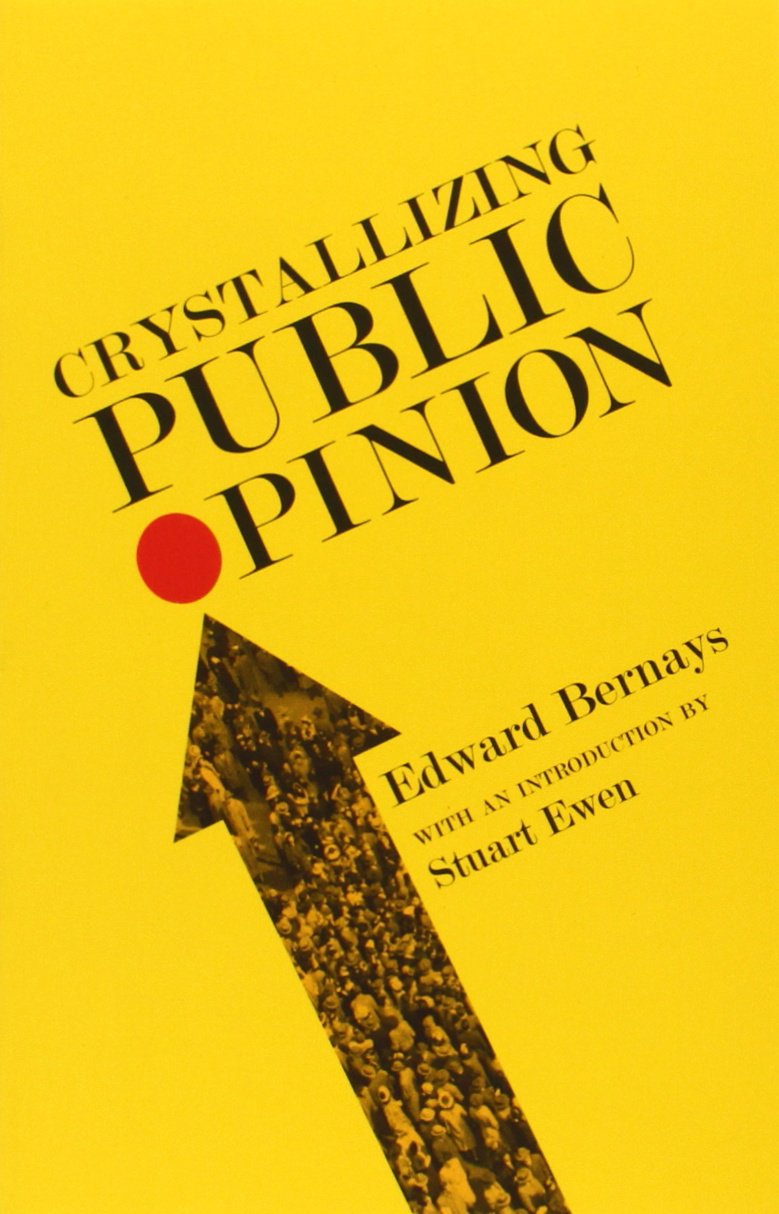Edward Bernays’ Crystalizing Public Opinion
 Crystallizing Public Opinion
Crystallizing Public Opinion
Propaganda
Ig Publishing
May 2011
204

Edward Bernays published his first book on the new profession of “public relations counsel”, Crystalizing Public Opinion, in 1923. The First World War had ended; his uncle, Sigmund Freud had published A General Introduction to Psychoanalysis a few years prior (in 1920); and the US Post Office was destroying copies of James Joyce’s Ulysses.
Bernays used the phrase “public relations counsel” because he wanted to imply that his work was similar to that of a “legal counsel”; and also to distinguish himself from both “press agents” and “advertising men.” Press agents interface between a company and the press; and advertising uses conventional routes. Bernays was different.
For example, he was hired by a packing house to increase sales of bacon. To do so, he undertook a survey of physicians across the country to provide authority for the “medical truth” that “hearty breakfasts were dietetically sound” (p. 54). From sources other than this book, we can learn that this campaign made use of both this survey and additional articles promoting eggs and bacon as important components of breakfast (this, during an era when most people ate a light breakfast). His campaign was successful and increased sales of bacon without what we would naively think of as advertising.
Bernays was employed by a hair-net company that saw falling sales as a result of the popularity of bobbed hair. In this case, Bernays used a survey of the leaders of women’s clubs across the country to determine that there was a “latent opinion” that made long hair (and, hence, the need for hair nets) more popular. But Bernays didn’t use a single approach to his client’s problems. In this case, (again from sources other than this book) we find that he also tried to influence government regulations to require hair nets for some jobs.
Throughout the examples in Crystalizing Public Opinion, we are constantly reminded that Bernays believes the legitimate job of the public relations counsel is to create news events designed to have maximal and enduring impact on both leaders and the wider population. The public relations counsel “…is not merely the purveyor of news; he is more logically the creator of news” (p. 188).
His justification for this blatant manipulation? Simply that democracy cannot function without “…the higher strata of society–the cultivated, the learned, the expert, the intellectual…[injecting] moral and spiritual motives into public opinion” (p. 204).
While Bernays gives lip service to the ethical responsibilities of the public relations counsel, his own record shows he was willing to help overthrow the democratically elected president of Guatemala (in service to the United Fruit Company); overthrow taboos against women smoking in public (in service to Lucky Strike); dictate “green” as the fashion statement of 1934 (so that Lucky Strike could sell green packs of cigarettes); and manipulate public health discussions regarding fluoridation of water (so that the Aluminum Company of America could rid itself of industrial waste).
Unlike traditional advertising campaigns, Bernays’ propaganda invokes the subtle grace of third-party authority; behind-the-scenes tinkering that is neither documented nor visible to the public; and the careful influence of debates which are equivocal (for example, we can easily see that women should be allowed to do in public whatever men are allowed; that one “hot” color is as good as another; and that fluoridation of public water supplies has some health benefits).
Bernays was not the first propagandist (clear examples date to the 17th century), but he is perhaps the most famous promoter of the field–a field that has grown enormously since the 1920s. In the introduction to the 2004 Ig Press reprint of Bernay’s Propaganda, Mark Crispin Miller states “‘In fact,’ Bernays notes in this book, ‘its use is growing as its efficiency in gaining public support is recognized.’ That propaganda easily seduces even those whom it most horrifies is a paradox that Bernays grasped completely; and it is one that we must try at least to understand, if we want to change the world that Edward Bernays, among other, made for us” (p. 30).
